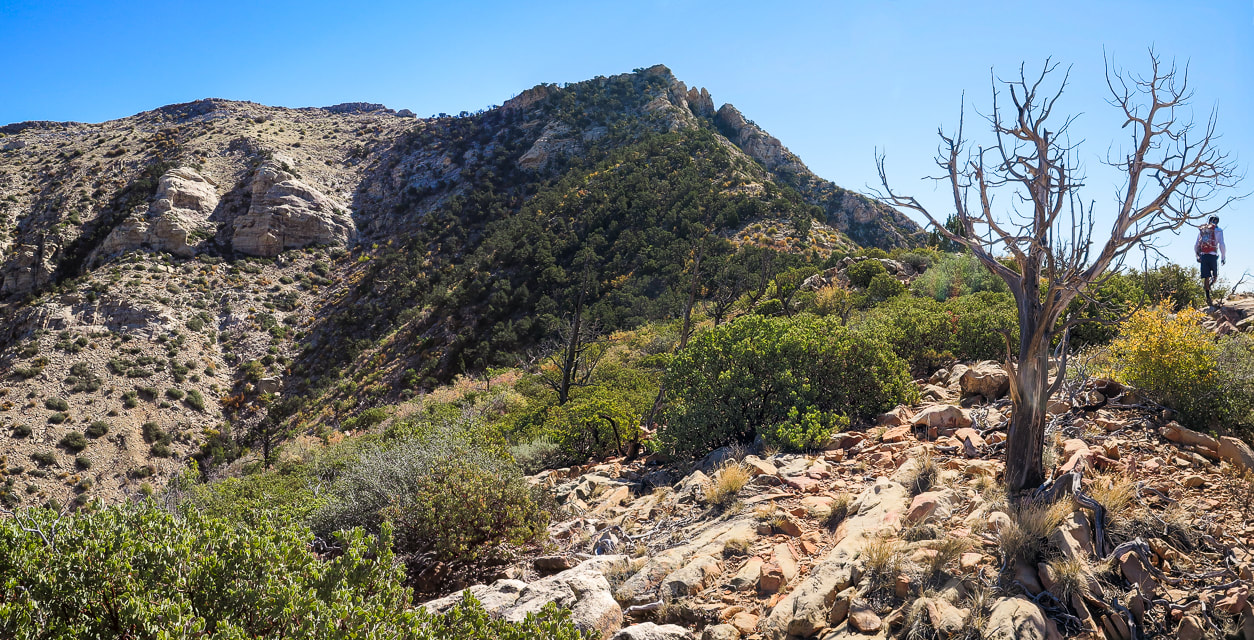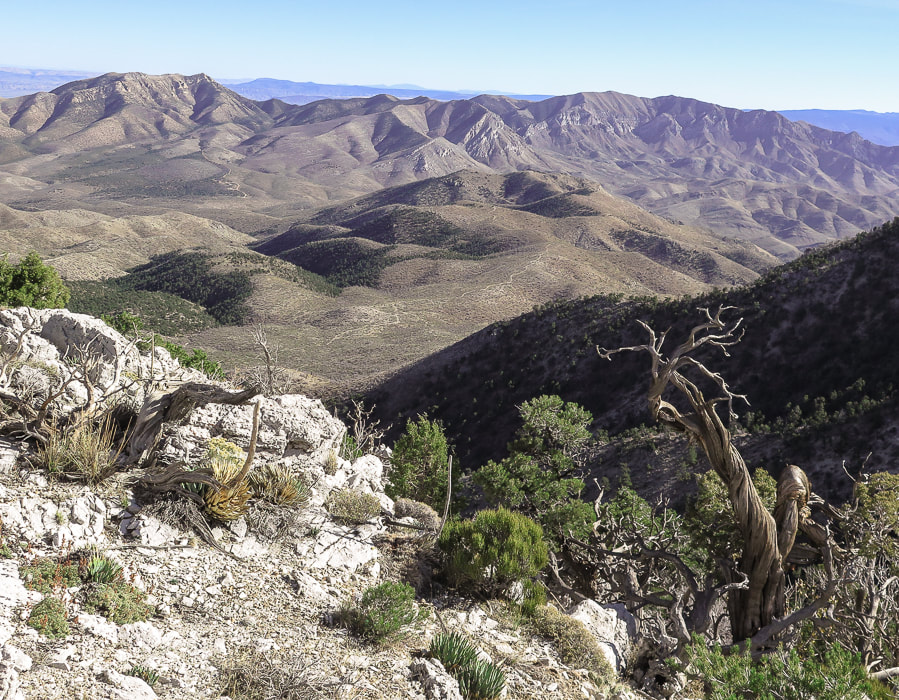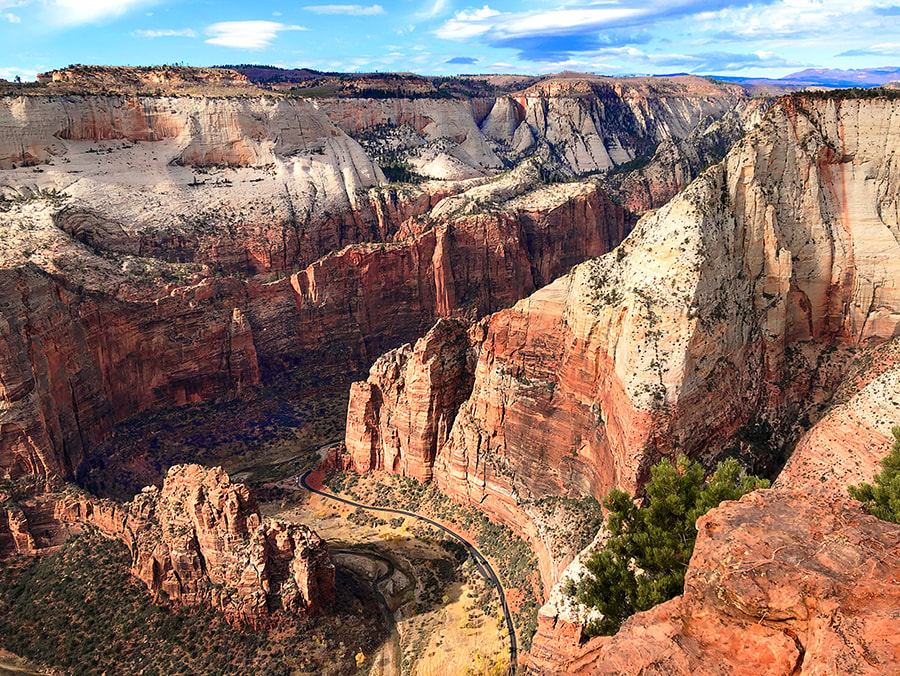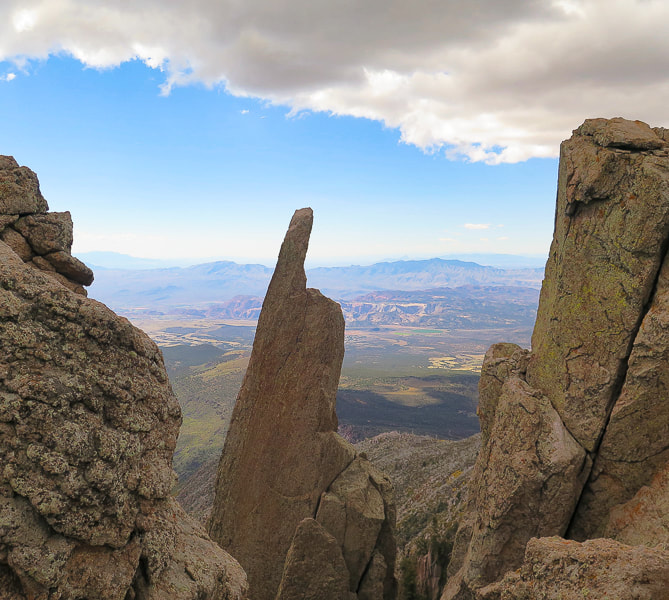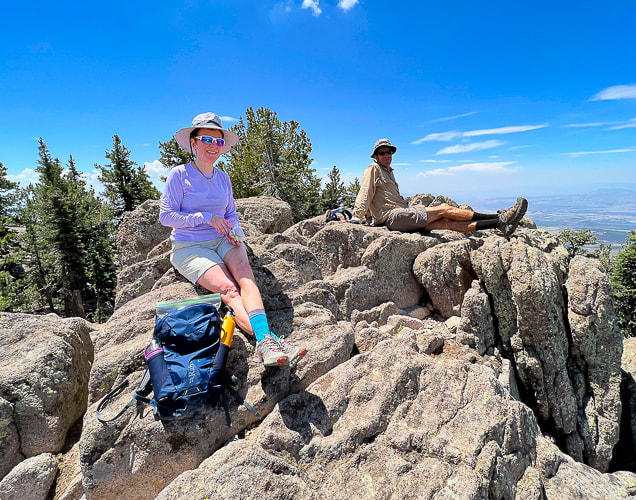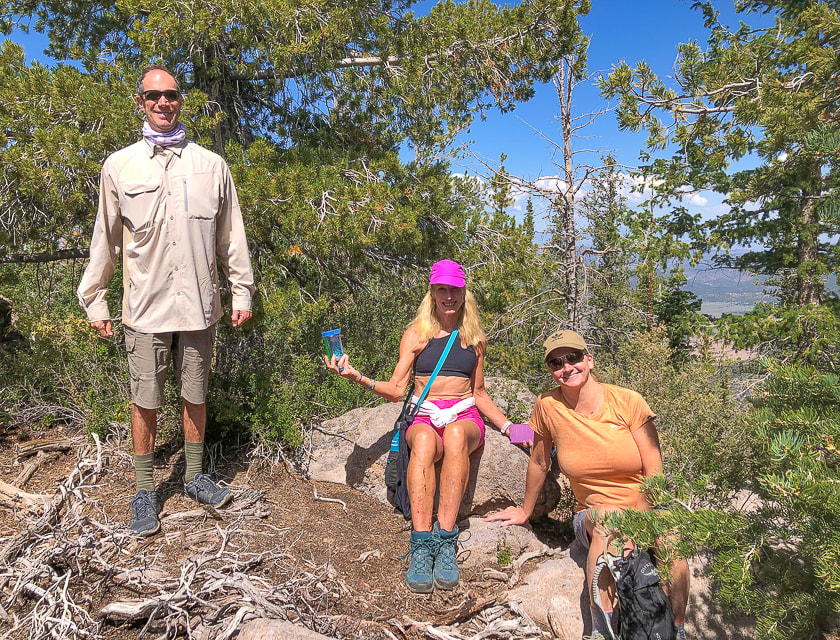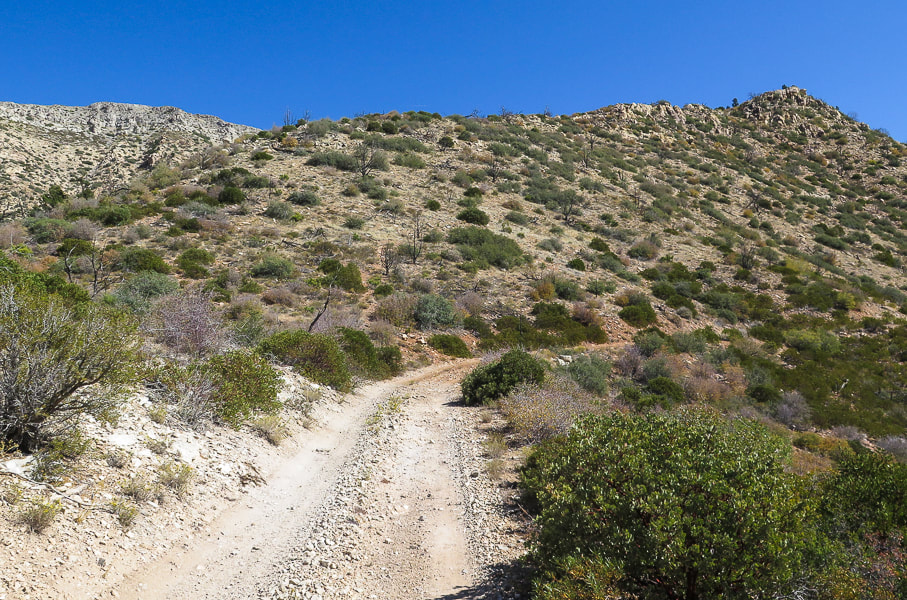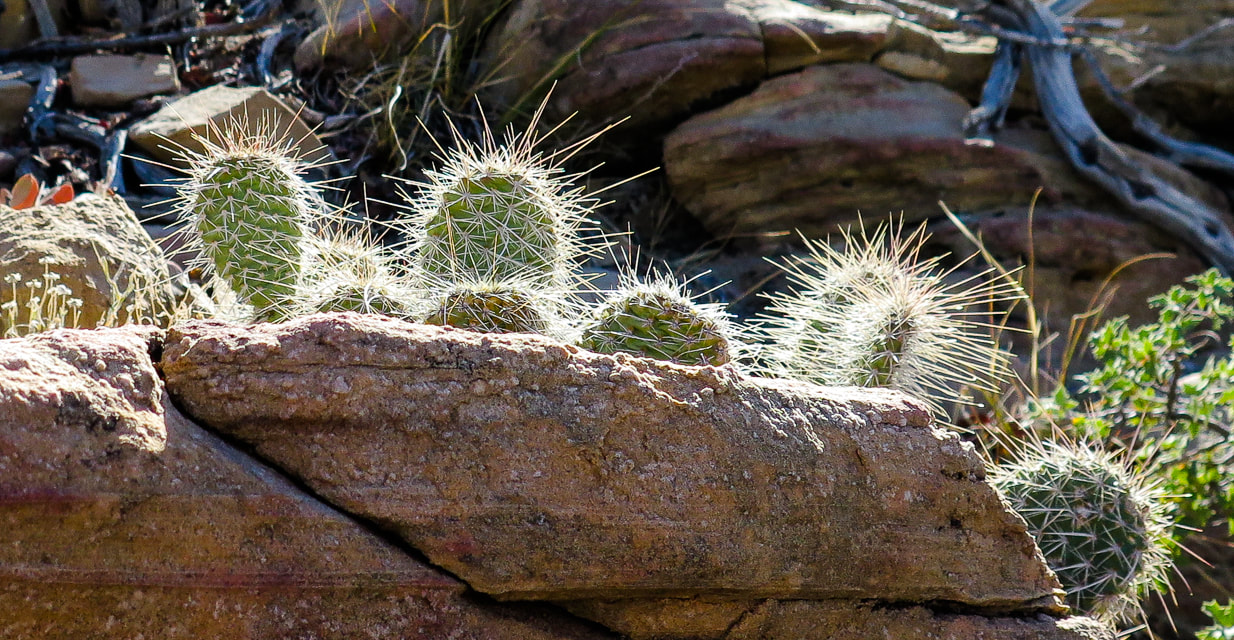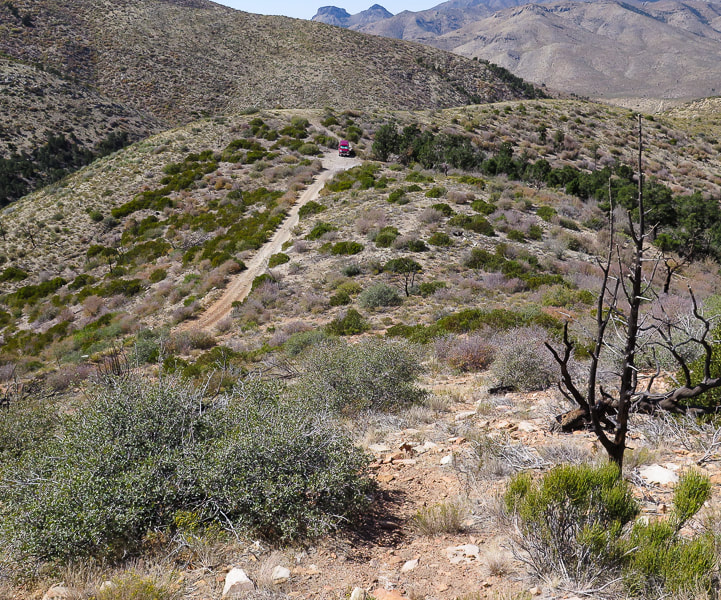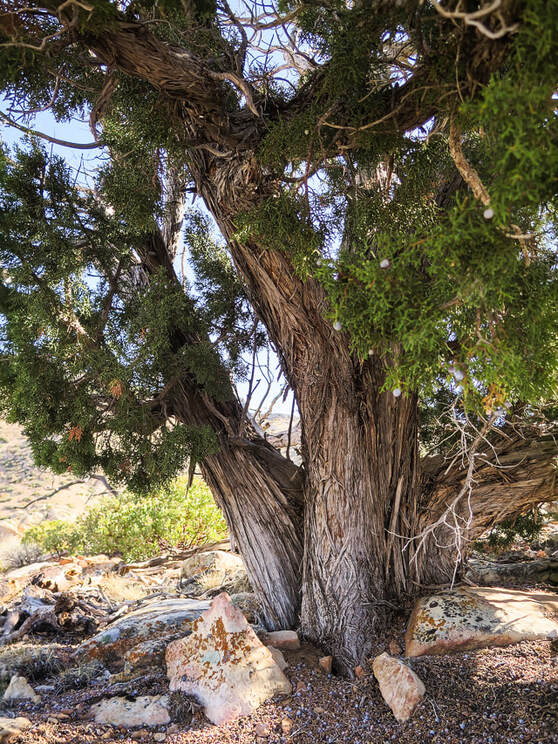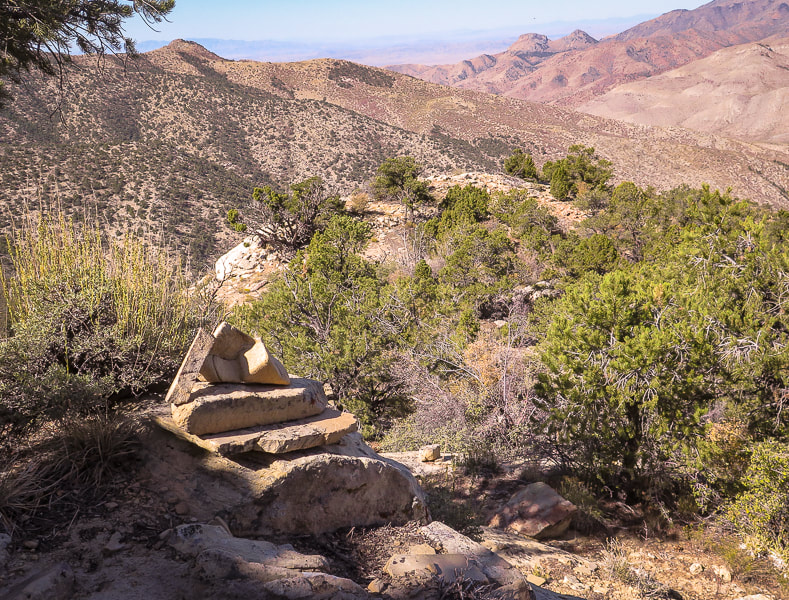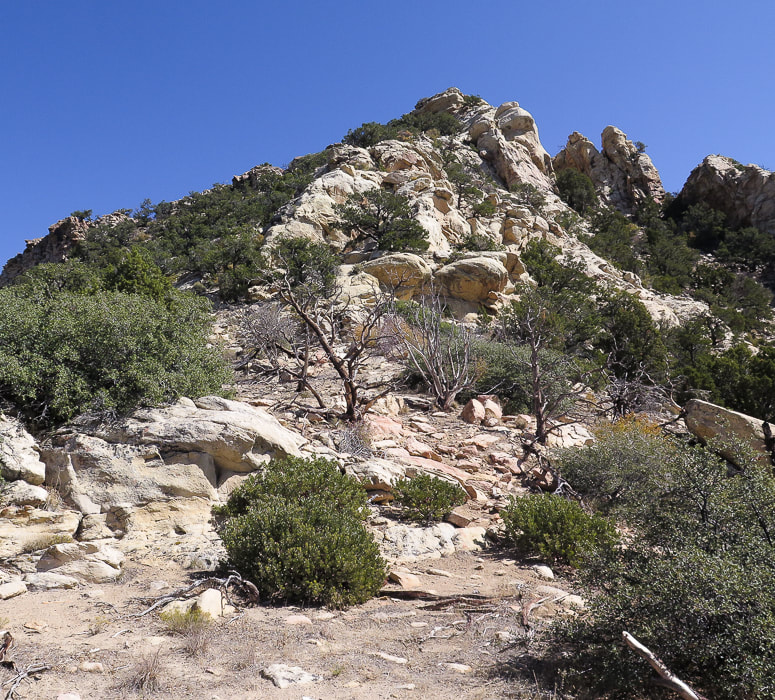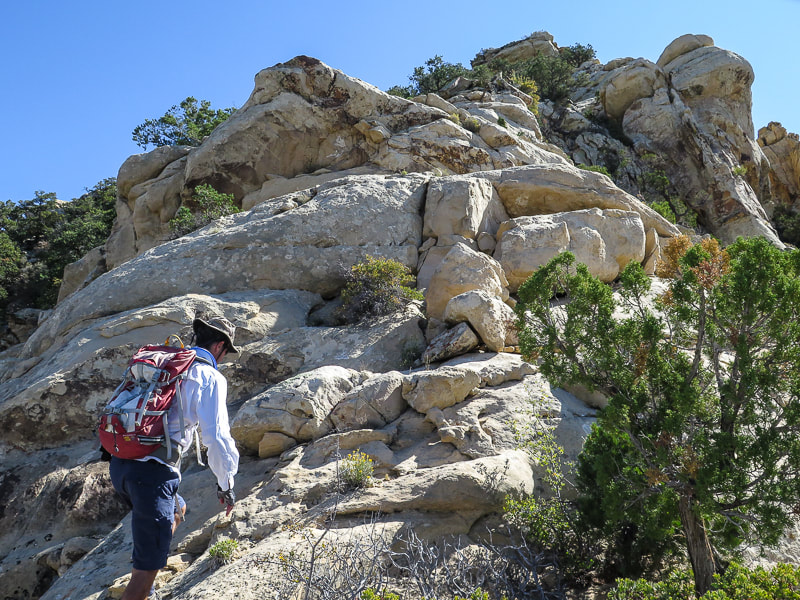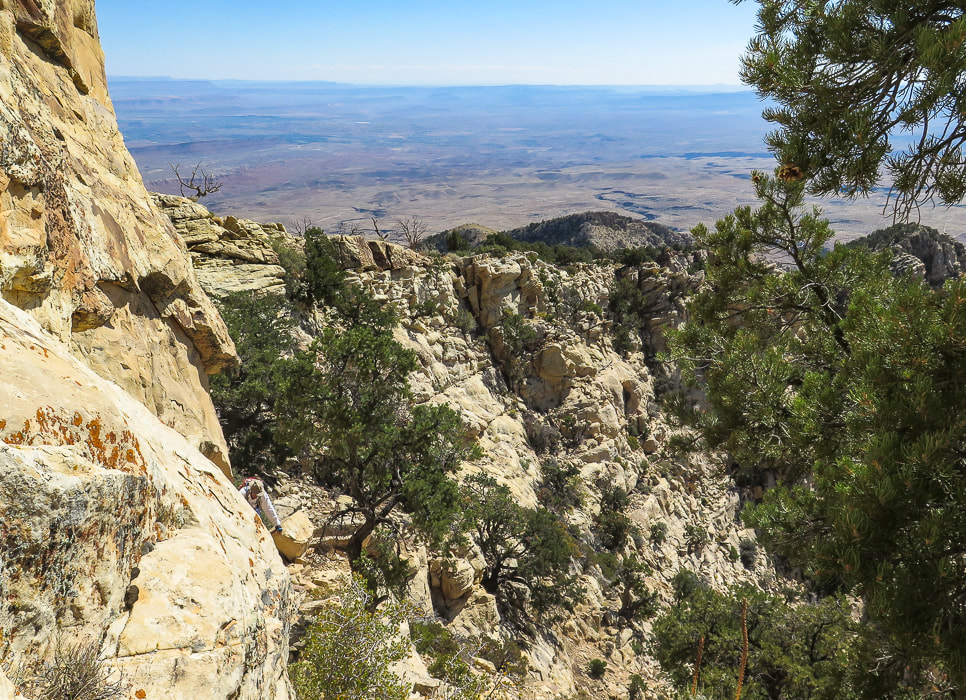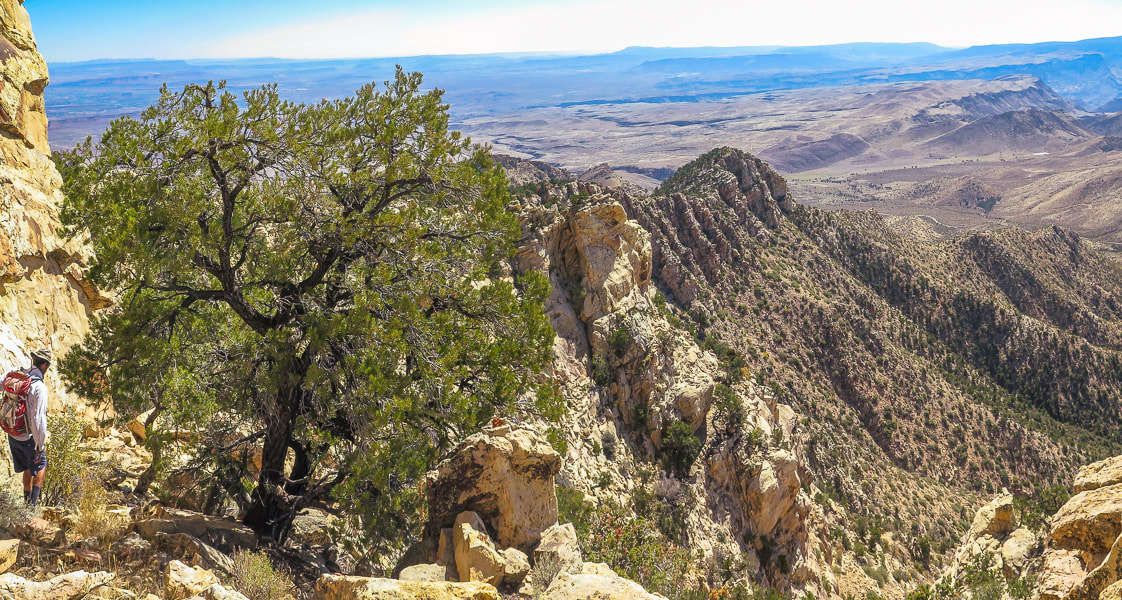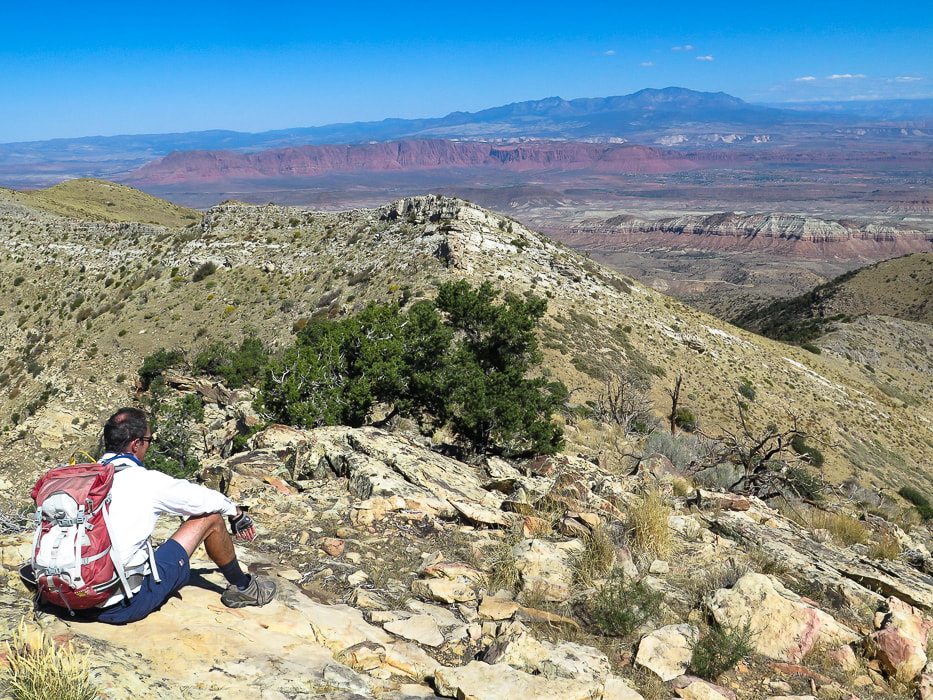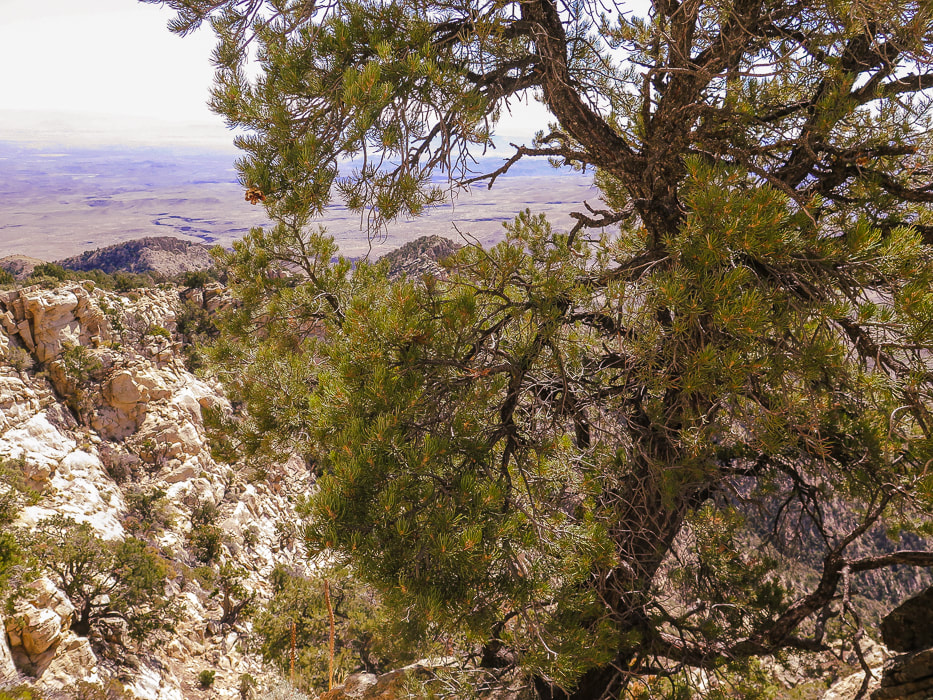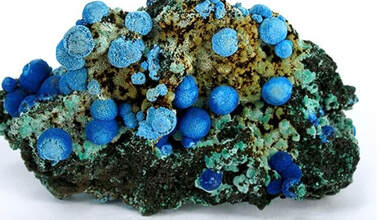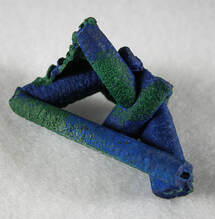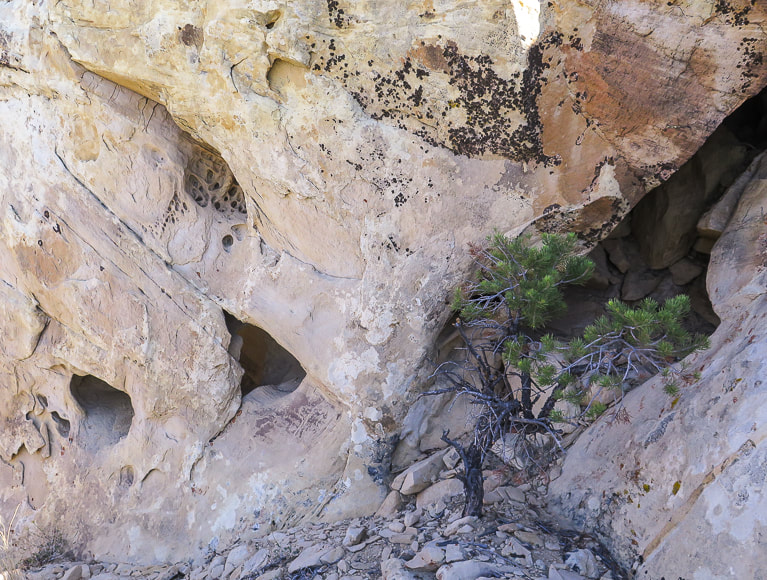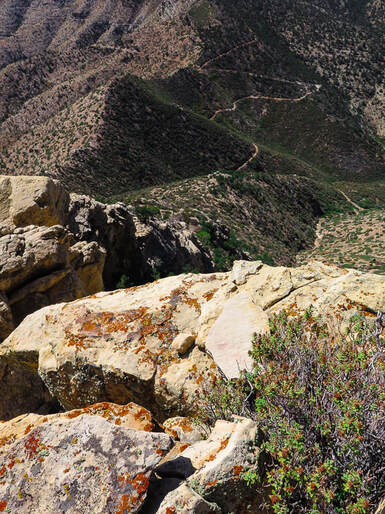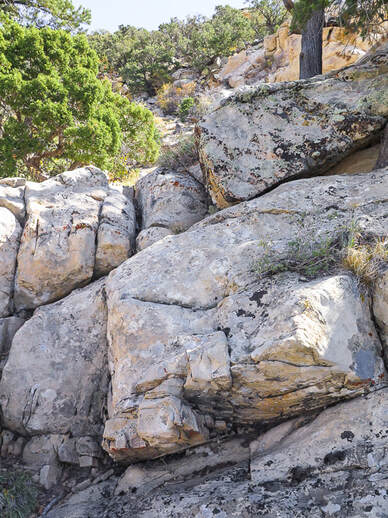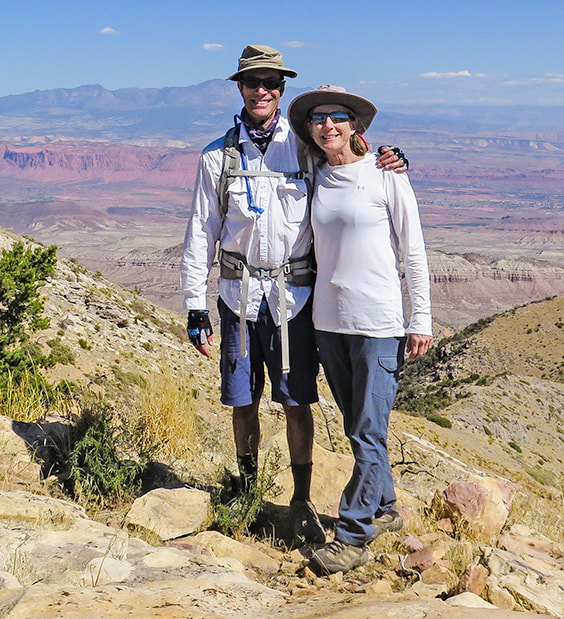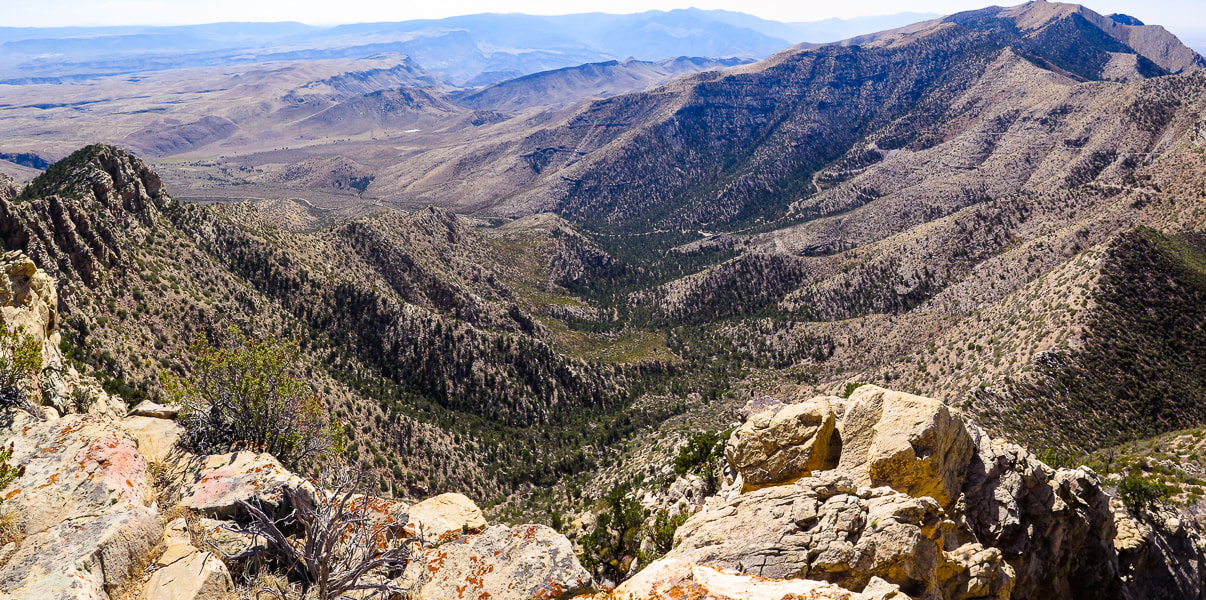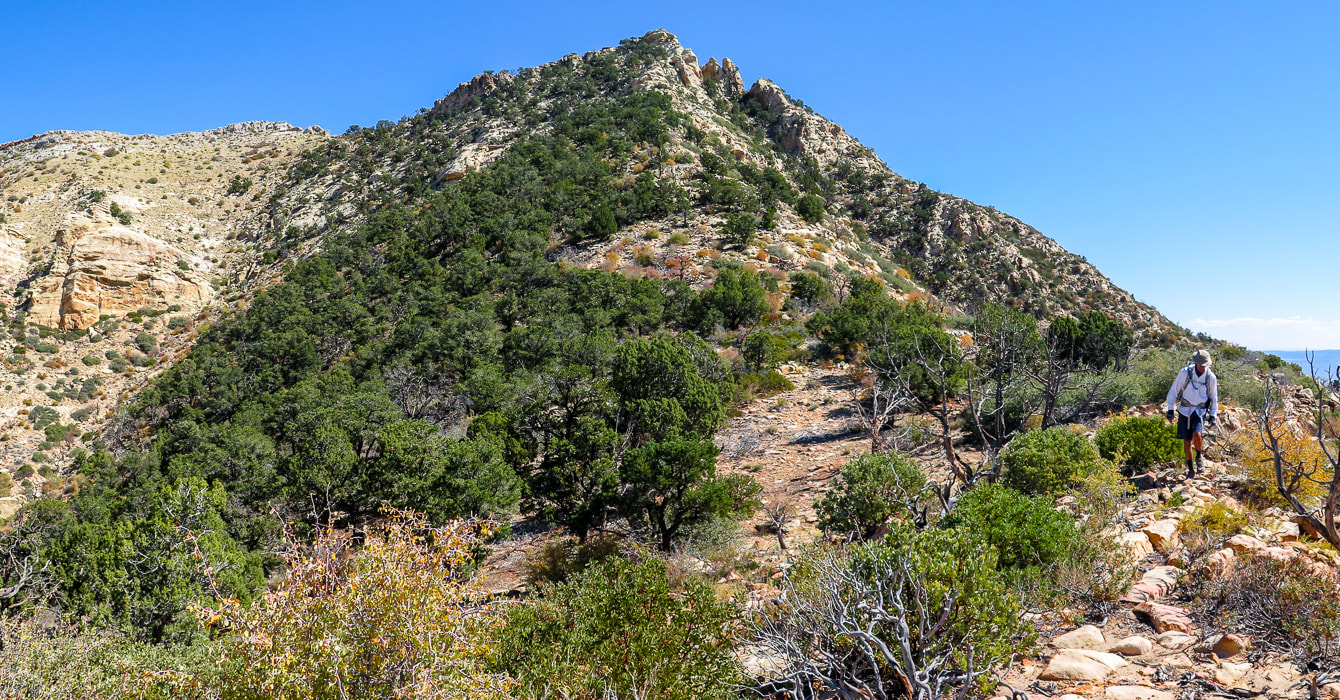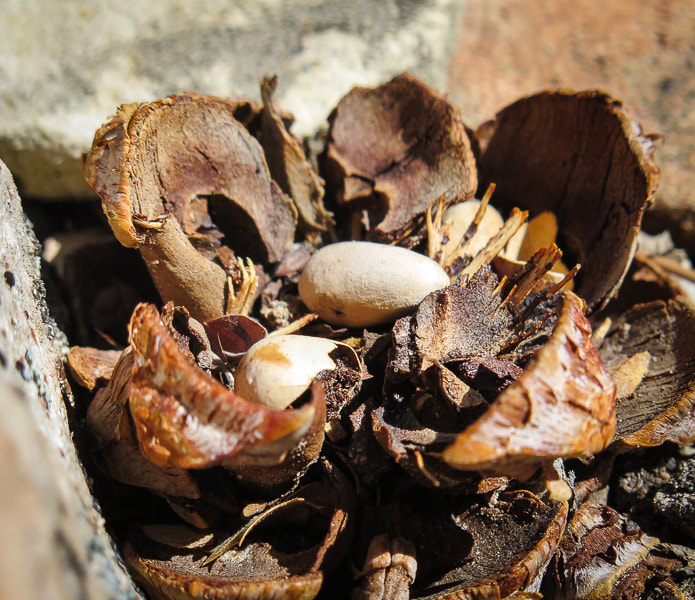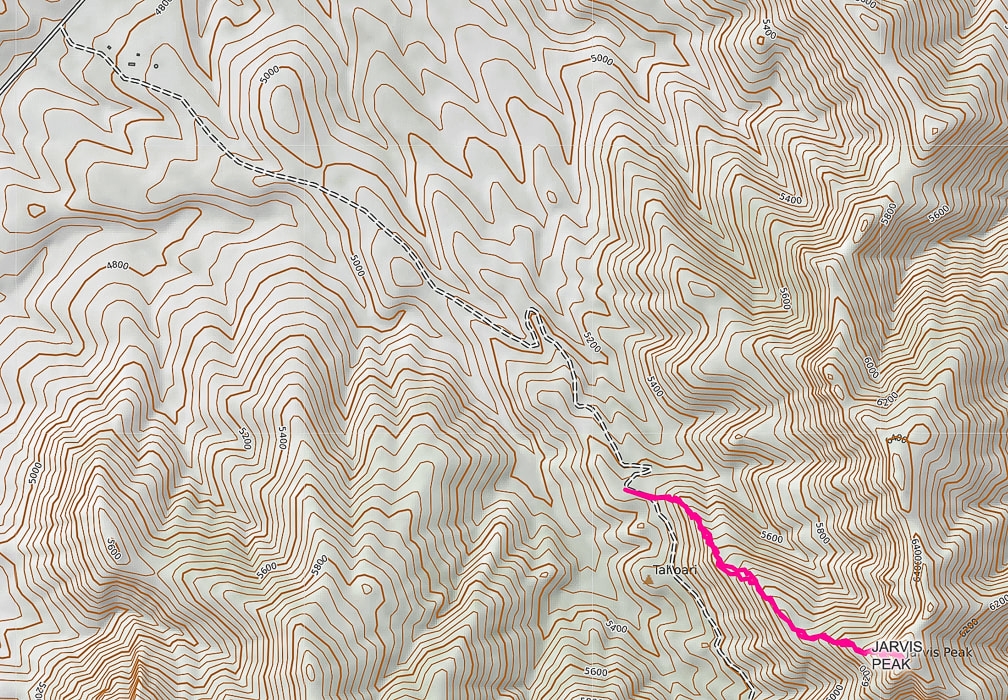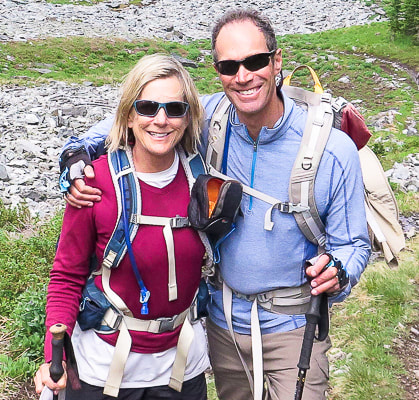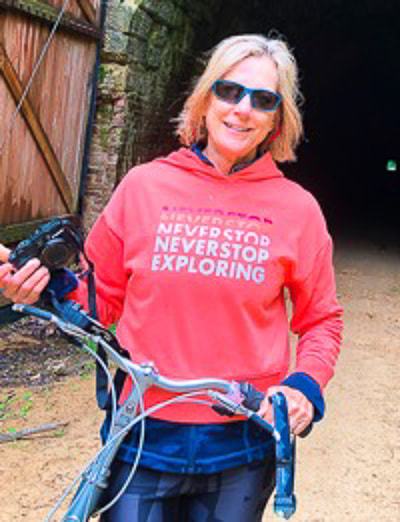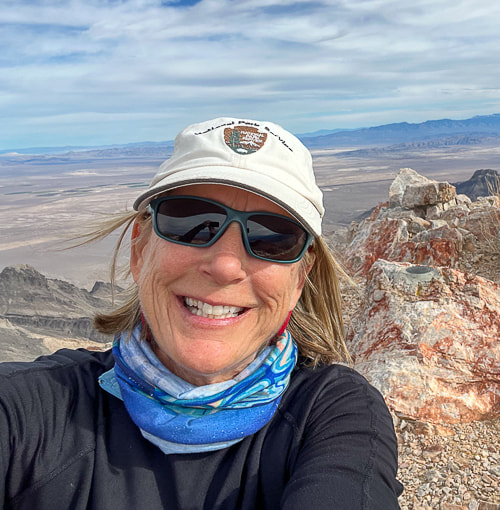|
Break out of the "typical" southwestern Utah hike to discover more remote and interesting backcountry adventures. A short hike up Jarvis' northwest ridge rewards with expansive views of two distinct physiographic regions: the Colorado plateau to the east and the Mojave Desert to the southwest.
Approaching the final ascent on Jarvis Peak's northwest ridge.
Easier route switchbacks just left of summit through pinyons and junipers. Want a more "exciting" ascent? - go around to the right beneath the crags.
View of Jarvis Peak (highest point on the left side of range) from near summit of West Mountain - Beaver Dam Mountains.
Trip Stats
Location: Beaver Dam Mountains, west of St. George, Utah. This mountain range extends into northern Arizona. Distance/Elevation Gain: 2 miles out and back: 1,100' gain. Start of ridge = 5,453', summit = 6,533'. Coordinates: Trailhead: UTM 12S 0250585E 4108377 N (WGS84). Jarvis Peak: 0251503E 4107770 N. Difficulty: Moderate Class 1 and Class 2 with minimal exposure if use north route around summit block; Class 3 moderate exposure south route. Maps: USGS 7.5 min topo map - Jarvis Peak, Arizona Strip Visitor Map from BLM, All Trails app. for Jarvis Peak. Date Hiked: October 2, 2021 Considerations: High-clearance 4WD needed on access road to base of Jarvis' west ridge, due to rocks and ruts. Walking the road adds 1.7 miles one way. Driving Directions: From St. George, drive northwest on Old Highway 91. Soon after you pass Ivins and cross over the Santa Clara River, reach a junction with Hwy 91 and Gunlock Reservoir. Take a left to stay on Hwy 91. Travel 7.1 miles to the Utah Summit. At the pull-off parking area to the left (east), follow gravel road (not marked and steep and rocky in parts) east for 1.7 miles to a pull-off to the right at a sharp left switchback in the road and park. Jarvis' western ridge to the left is gained in a few hundred feet of walking further on this road. Hike Directions: shortly after parking, walk up road a few hundred feet to see a path on left side of gravel road to gain Jarvis' ridge. Trail is seen most of the hike, with occasional rock cairns - basically stay more or less on top of the ridge. On the way up, the trail treks slightly left of the ridge to avoid cliffs to the right. At the final saddle below the last steep ascent, go up through the trees to the left of the summit for an easier route. We went around the summit's right (south) side but found it difficult to reach summit due to Class 3-4 climb up final summit block.
Related:
Overview
You would think that a spectacular 360-degree multi-state and multi-region view from a summit is earned only after a long and arduous hike, but not true with Jarvis Peak. After a short drive from St. George in southwestern Utah and a short one-mile hike, we were looking at Arizona on one side, and Utah on the other. To the northeast, a fantastic view of Red Mountain's cliffs stands out in a long crimson row beneath the snow-dusted peaks of the Pine Valley Mountain Wilderness. The rock towers of Zion Canyon capture the horizon to the east. The huge, dry and rugged Arizona Strip, north of the Grand Canyon with its mountain ranges and alluvial fans spreads to the south. West Mountain Peak with its communication towers, the highest point in the Beaver Dam Mountains (7,680'), is seen not far away to the northwest. The Beaver Dam mountain range is a "sky island" that rises high above a sea of thinly vegetated, dusty, stark, and monotone desert, with the exception of the bright red sandstone in the St. George area. It's great that we can choose either mountains or low desert, according to seasons. It feels like wilderness until you see the cities of Ivins and St. George to the east. The Beaver Dam Mountain range straddles three distinct physiographic regions (provinces) of the southwest -a "geologic triple junction": the Mojave Desert, the Colorado Plateau and Nevada's Great Basin. If you live in St. George, you have access to all of these regions. I know the grandeur of Zion National Park can't be beat (except by the Grand Canyon), but the solitude, beauty, and geologic features of the remote backcountry and wilderness surrounding it is just as noteworthy. Fred and I are discovering that this huge region of southwestern Utah is an adventurer's paradise. And since I am a self-described "geology nerd", there is a lot of area to study and learn about in this region (see "For the Geo-curious" below).
Beginning of hike, just a few hundred yards from parking on this road; trail leading up to top of ridge - Jarvis Peak behind ridge in this photo.
Quite possibly Mojave prickly pear, AKA Old Man prickly pear.
Our Hike
The huge view of southern Utah and northern Arizona from Jarvis Peak is just a one-mile hike from start to summit. It's not everywhere you can get a grand view in such a short distance. The gradual climb up the northwest ridge is not hugely exciting, but if you go around the right (south) side of the mountain it gets a lot more interesting with Class 3 climbing up final cliff to summit. We summited using the left (northwest) side of the peak. The 1.7-mile 4-wheel drive road from Utah Hill on Highway 91 to the base of Jarvis Peak's northwest ridge gradually becomes steeper, more narrow with ruts and rocks. If you choose to walk the road, the total hike distance out and back would be ~ 5.5 miles. The trail to Jarvis Peak begins just a few hundred yards after parking up the gravel road. It gains the ridge pretty quickly and then stays on it, going through thickets of manzanita and ducking under junipers and pinyon pines. It is marked occasionally by rock cairns as it meanders in sand around and on top of sandstone rocks. The greens of prickly pear, pines, juniper and lichens mix perfectly with the reds of manzanita branches, stained sandstone and pinyon pine cones to create a pleasing southwest desert landscape.
Trail (bottom) not far from where we parked (top of image).
One of the largest junipers I have ever seen!
We stayed as close to the crest of the ridge as possible. This hike rambles up a series of short climbs and short saddles. Upon reaching the last saddle at the base of the final summit ascent, there is a large rock cairn placed toward the left side of the base. We ignored its subtle direction, telling us to go left. Instead, we first went to the right around the south side of Jarvis Peak, stepping quickly across a loose-rocked steep gully to the back of the peak. I found the short and final Class 3 climb up a vertical crack in cream-colored Queantoweap sandstone was too exposed, because the platform is narrow, slippery and drops steeply. So, we retraced our steps and went by some cool-looking sandstone caves, back to the rock cairn and then found our way up through a gentler, but still steep slope to easily gain the summit.
A rock cairn marks the base of the final peak ascent, directing you to the left side of the summit, up through trees.
We originally went around to the right - up the canyon in shadow with two pinnacles, but I found that final summit cliff too daunting; we came back down and climbed to left of summit through the trees.
Heading toward south side of Jarvis Peak
Maneuvering around the steep back side of summit - Fred behind sandstone ourcrop lower left.
The backside (east-facing) of Jarvis Peak with the sandstone cliffs on east side of its summit.
Jarvis Peak summit looking to the east: Red Mountain near St. George and Pine Valley Mountains on horizon.
Huge pine tree on southeast side of summit.
For the Geo-curious
Jarvis Peak is located in the eastern Beaver Dam Mountains where a "magnificent set of sedimentary rocks" is described by authors of Geologic Map of the Shivwits Quadrangle, Washington County, Utah. This area of southwestern Utah/Northern Arizona is geologically significant not only because it includes all the major rock types - igneous, sedimentary, and metamorphic, it also sits between the Colorado Plateau to the west which includes the red and orange rocks of Zion National Park, the Great Basin and Range Province to the west, most easily described as parallel mountain ranges caused by spreading, and the Mojave desert to the south. The geology in the Beaver Dam Mountains is certainly not lacking in variety; it includes major folds as well as structures caused by the earth spreading, alluvial fans and just about every kind of fault. The Redwall Limestone forms impressive cliffs and has abundant coral fossils. It was easy to find geologic maps. You will be hiking on Queantoweap Sandstone (Permian period) on the way up to and including Jarvis Peak, and on its west side look over siltstone and limestone containing fossils. This sandstone is massive (homogenous, lacking internal structure), cliff- and ledge-forming, gray to pink in color, best seen on the right (south) side of peak.
Apex Mine - just one mile south of Jarvis Peak. More recently, ore was mined for its gallium and germanium content. Gallium is used in semi conductors and electronics. Germanium's uses range from infrared optics to cloth and food containers. Copper and silver were originally taken from this mine 1884 - 1962. These are samples of azurite found in this mine. Photos from mindat.org.
Queantoweap Sandstone on Jarvis Peak
Note the honeycomb weathering in upper cavernous recess.
View from the top - road possibly to Apex Mine.
Pinyon pine cone and its seeds - AKA pine nuts
Interactive Google map for Jarvis Peak hike.
Our GPS tracks from access road leading from Utah summit on Hwy 91 to Jarvis Peak.
Profile for Jarvis Peak: only one mile to the summit.
The dip in the profile at the summit shows that we reversed our course and went around to the other side to reach summit.
References
BackroadsWestTrip blogs - Unique Landscapes of the Southwest - backroadswest.com. Hammond, B.J. Geologic Map of the Jarvis Peak Quadrangle, Washington County, Utah. Hintze, L.F., Hammond, B.J. 1994. Geologic Map of the Shivwits Quadrangle, Washington County, Utah. Utah Geologic Survey. McNair, A.H. 1951. Paleozoic stratigraphy of part of Northwestern Arizona: American Association of Petroleum Geologists Bulletin, v. 35, no. 3. Mindat.org. Apex Mine. Washington County Historical Society. The Apex Mine (from internet).
6 Comments
11/5/2021 07:09:14 am
What a great find! As our National Parks gain more attention and fill beyond capacity, the wise and able among us will rely more on these off-the-grid treasures.
Reply
Yes, you are so right Linda. Zion NP is gorgeous and that's why it gets 4 million visitors each year, but it's trails are getting trampled! I love it there but there is so many other interesting places to explore in southwestern Utah. You have a good way of describing it - off-the-grid treasures - I will remember that when I write about my next adventure (Virgin Mountains, Nevada).
Reply
Lynn K
11/27/2021 07:18:20 pm
Wow--what an interesting landscape! Also a very cool pricklypear! Thanks for sharing.
Reply
Thanks Lynn!
Reply
9/6/2022 02:56:42 pm
But the solitude, beauty, and geologic features of the remote backcountry and wilderness surrounding it is just as noteworthy. Fred and I are discovering that this huge region of southwestern Utah is an adventurer's paradise. Thank you, amazing post!
Reply
Thank-you William for reading and commenting! It is extraordinary country all around us in Southwestern Utah. I'd like to get to the west side of the Beaver Dam Mountains to see some geologic features there. Went to Moapa Peak south of there near Mesquite, Nevada and found some incredible fossils. Glad I can show my passion for and appreciation of this area and share it with others.
Reply
Leave a Reply. |
Categories
All
About this blogExploration documentaries – "explorumentaries" list trip stats and highlights of each hike or bike ride, often with some interesting history or geology. Years ago, I wrote these for friends and family to let them know what my husband, Fred and I were up to on weekends, and also to showcase the incredible land of the west.
To Subscribe to Explorumentary adventure blog and receive new posts by email:Happy Summer!
About the Author
|
